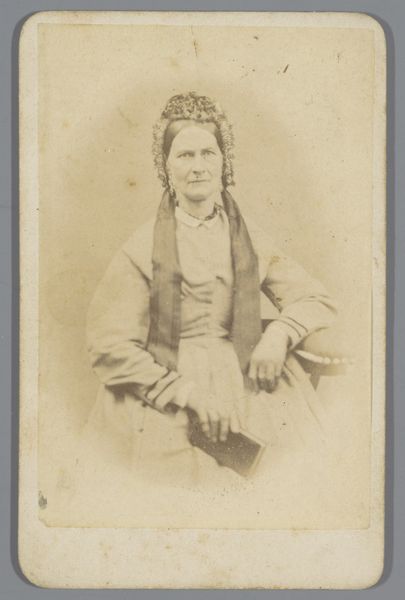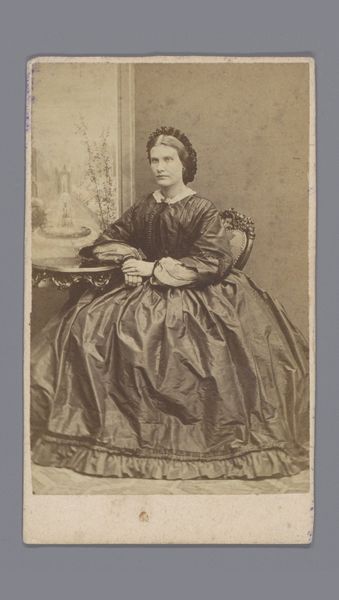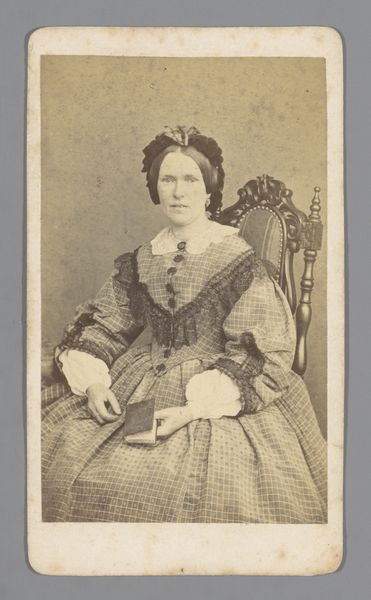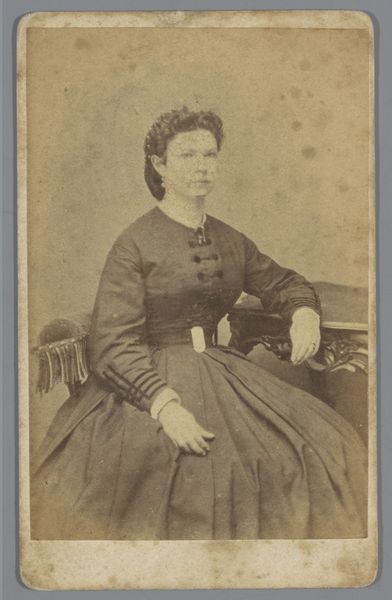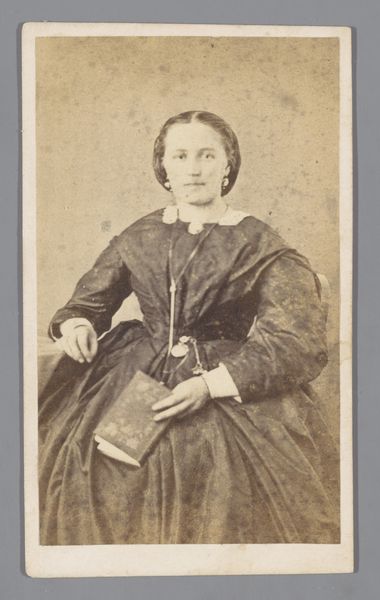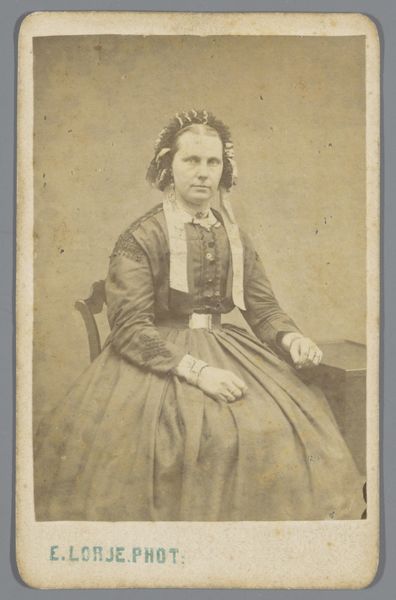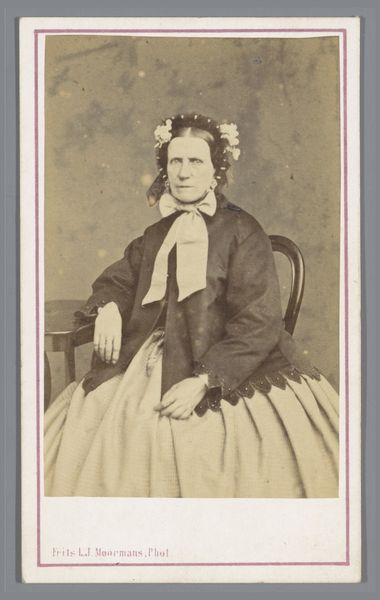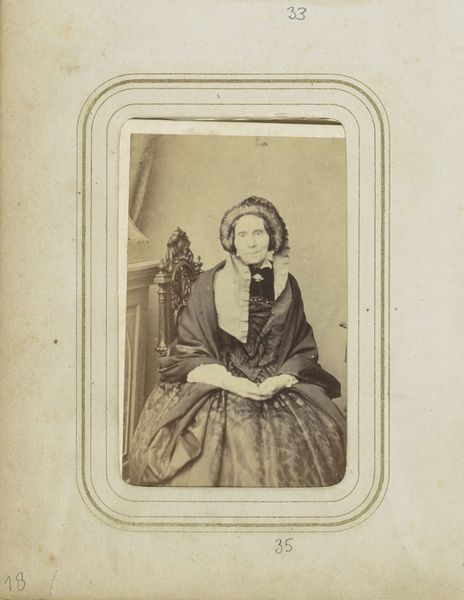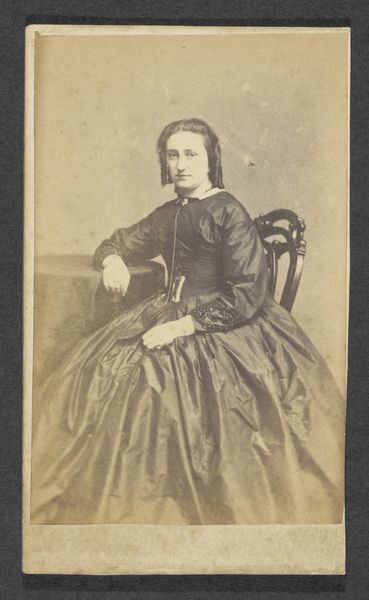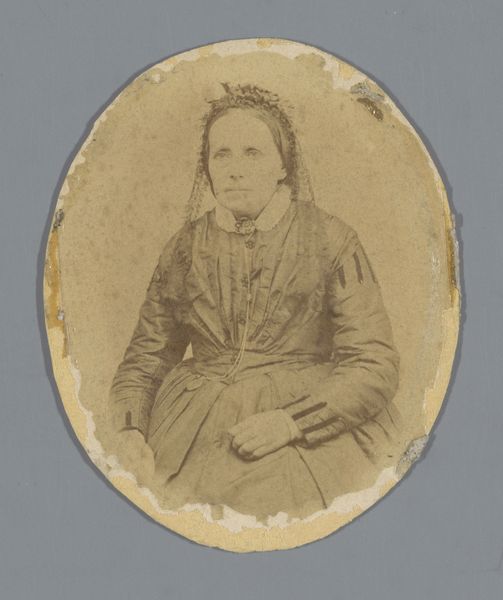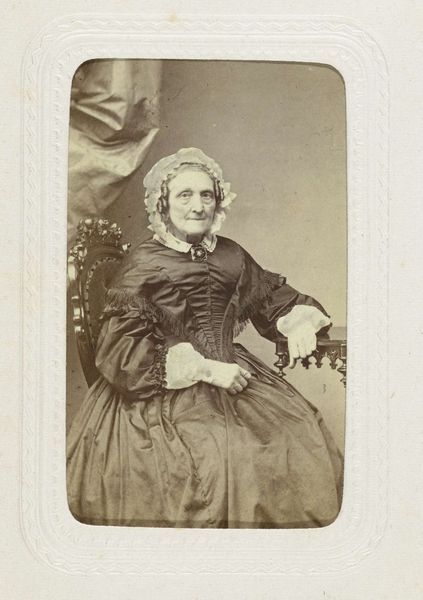
photography, albumen-print
#
portrait
#
photography
#
albumen-print
#
realism
Dimensions: height 240 mm, width 180 mm
Copyright: Rijks Museum: Open Domain
Curator: This is a albumen print portrait of an unidentified woman, captured sometime between 1860 and 1880. Editor: My first impression is of quiet dignity. She seems reserved, her posture and the soft lighting contribute to a feeling of stillness and a certain somberness. Curator: Looking at it from a material perspective, albumen prints, like this one, were extremely popular because of their crisp detail and relatively easy process. Notice the gentle warmth of the sepia tones achieved by this process. This was how the expanding middle classes saw themselves. It reflects growing aspirations in newly formed societies, doesn't it? Editor: Absolutely. We have to remember photography was becoming increasingly accessible at this time, so the rise of portraits signifies a shift in who had access to visual representation. This image tells me a lot about the performative aspect of Victorian womanhood, what role she had to embody. Curator: Indeed. Her clothes suggest middle-class respectability; but you can tell it has been lived in. There's a balance between a controlled presentation and the evidence of everyday wear. I’d also note the way the set itself and props – her bonnet, the chair and table beside her – construct her as a sitter within domestic spaces of 19th Century life, reinforcing this aspect of being. Editor: And her slight, almost imperceptible smile suggests compliance within those social boundaries. She is neither overly flamboyant, nor outwardly unhappy, she occupies a muted, liminal space within societal expectations. This controlled expression and posture suggests that even sitting for a photograph was an intentional political choice of conveying specific societal expectations. Curator: And there’s that detail on her cuffs that must have taken so long to stitch. As we analyse photographs such as this, the study of dress can bring a completely different perspective as each item was handmade. Editor: Precisely. Considering how photographic studios, as places of business, gave employment to a new class of tradesmen and technicians. By extension we also ought to wonder if the choice of materials were connected to emerging international trade systems. Curator: Thank you, these multiple views reveal how class, production, and presentation intersect, allowing us to construct a deeper social-historic understanding. Editor: Exactly, revealing photography as much more than mere visual documents; as tools that served social functions and revealed socio-economic conditions.
Comments
No comments
Be the first to comment and join the conversation on the ultimate creative platform.
